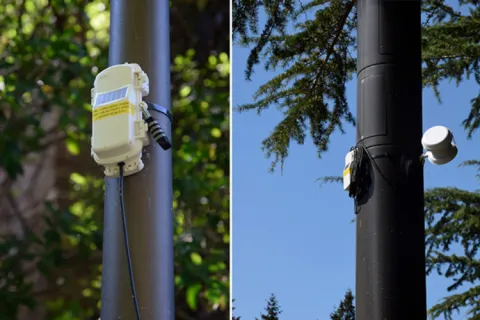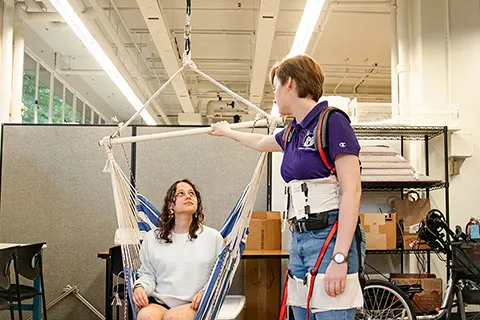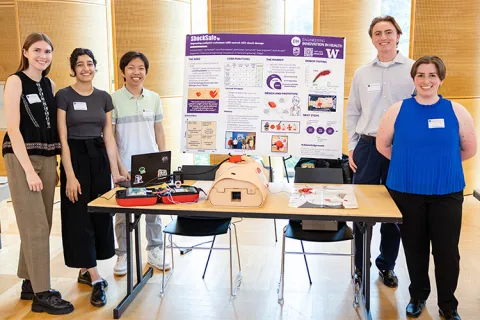Lockheed Martin
JetRacer Soccer League
This project was a second year continuity of the JetRacer Soccer League project. This student team worked to utilize artificial intelligence to train RC vehicles to play competitive soccer. In the previous year, hardware was developed along with preliminary development of image recognition and object following. For this year, this student team worked to focus on improving the soccer playing capabilities of the vehicle through machine learning including striking a ball into a goal from a variety of positions on the field and showing logic capabilities for edge cases. A part of this also included the student team working to develop a simulation environment for the JetRacer to train. After demonstrating a 1 vs. 0 soccer scenario, the student team then worked to add a second agent to play 1 vs. 1 soccer. Ultimately, this work attempted to provide insights in to the use of machine learning in a competitive environment while giving the students industry exposure to project management and development. The outcomes that this student team worked to accomplish included: (1) An updated open source guide uploaded to GitHub that explains how to recreate the artificially intelligent vehicles capable of playing soccer and contains build instructions for the soccer arena plus any support equipment, (2) Development of machine learning structure to train the vehicles, (3) Up to four JetRacer vehicles with operational sensors and software, (4) Simulation and experimental data acquired throughout the project, (5) A documented summary of the results of the work and objectives achieved.
Faculty Adviser
Payman Arabshahi,
Associate Professor, UW ECE,
Electrical & Computer Engineering
Students
Andrew Kim
Ara Vardanyan
Dylan Imayama
Eric Ly
Jacob Bakhshian
Nick Khormaei
Related News

Fri, 09/20/2024 | UW Civil & Environmental Engineering
Smarter irrigation for a greener UW
A new project combines satellite data with ground sensors to conserve water and create a more sustainable campus environment.

Mon, 09/09/2024 | UW Mechanical Engineering
Testing an in-home mobility system
Through innovative capstone projects, engineering students worked with community members on an adaptable mobility system.

Mon, 08/19/2024 | UW Mechanical Engineering
Students strive to ensure accurate AED shock dosage
ShockSafe, developed by students with the help of mentors from Philips and Engineering Innovation in Health (EIH), can distinguish between children and adults during cardiac arrest emergencies.

Wed, 08/07/2024 | Snohomish County News
Snohomish County, University of Washington partnership boosts efficiency in enterprise scanning center
UW Industrial and Systems Engineering Capstone Project set to save Snohomish County over $40,000 annually.